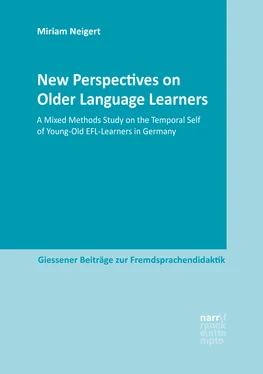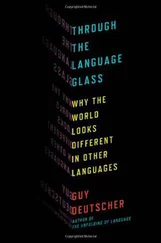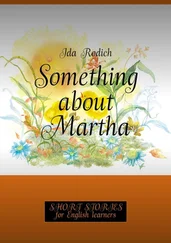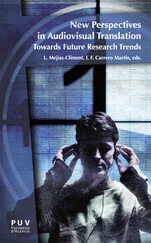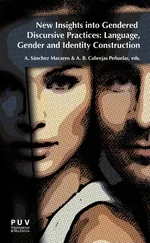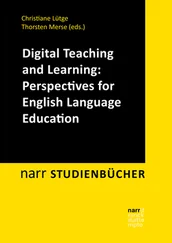Miriam Neigert - New Perspectives on Older Language Learners
Здесь есть возможность читать онлайн «Miriam Neigert - New Perspectives on Older Language Learners» — ознакомительный отрывок электронной книги совершенно бесплатно, а после прочтения отрывка купить полную версию. В некоторых случаях можно слушать аудио, скачать через торрент в формате fb2 и присутствует краткое содержание. Жанр: unrecognised, на английском языке. Описание произведения, (предисловие) а так же отзывы посетителей доступны на портале библиотеки ЛибКат.
- Название:New Perspectives on Older Language Learners
- Автор:
- Жанр:
- Год:неизвестен
- ISBN:нет данных
- Рейтинг книги:4 / 5. Голосов: 1
-
Избранное:Добавить в избранное
- Отзывы:
-
Ваша оценка:
- 80
- 1
- 2
- 3
- 4
- 5
New Perspectives on Older Language Learners: краткое содержание, описание и аннотация
Предлагаем к чтению аннотацию, описание, краткое содержание или предисловие (зависит от того, что написал сам автор книги «New Perspectives on Older Language Learners»). Если вы не нашли необходимую информацию о книге — напишите в комментариях, мы постараемся отыскать её.
New Perspectives on Older Language Learners — читать онлайн ознакомительный отрывок
Ниже представлен текст книги, разбитый по страницам. Система сохранения места последней прочитанной страницы, позволяет с удобством читать онлайн бесплатно книгу «New Perspectives on Older Language Learners», без необходимости каждый раз заново искать на чём Вы остановились. Поставьте закладку, и сможете в любой момент перейти на страницу, на которой закончили чтение.
Интервал:
Закладка:
Neugarten in her definition above describes the young-old as relatively healthy and active (see also Bromley 1990: 45). The word ‘relatively’ again shows how difficult it is to draw a clear picture of this age group. What, for example, would the word ‘relatively’ entail for the young-old learners in my study? A broad definition of relatively healthy in the domain of foreign language learning would include language learners still independent enough to be able or to be enabled to undertake language learning away from their homes.1 Generally this would also mean that sensory impairments – visual and auditory – as well as cognitive impairment (even though specific language classes for participants with a mild dementia exist) have not progressed to a state making it too hard for young-old learners to achieve their language learning goals. Additionally, with constantly improving medical treatment and intervention programmes (e.g. improved hearing aids or laser treatment) the biological dimension has become less of a characteristic effectively differentiating the young-old from, for example, the middle-aged or old-old with regard to language learning (Phillips et al. 2010: 15f.). Again, we see how this age dimension presents us with more vagueness or problems when trying to find a working definition of the young-old.
2.1.2 Chronological Dimension
We may expect that our successors in the conceptualization of age and the life-course will replace the nominal numerical adjectives and descriptions with which we have been dealing with concepts of much greater epistemological and practical effectiveness.
- Laslett 1994: 445f. -
The chronological dimension of age focuses on the number of years an individual has lived, i.e. it is determined by the year of birth. Every ID or passport thus makes a statement about one’s chronological age. Entering school or retirement, getting a driver’s license, being able to vote or allowed to drink alcohol – all of these things are opened up or restricted by a certain chronological age. They are not universal and they can change, i.e. they are arbitrary, which is why some of these examples are regularly at the centre of heated debates – as in the case of setting a retirement age (Midwinter 2005: 10; Rowland 2012: 167). Like the aforementioned increasing variability in the biological age dimension as individuals age, a person’s chronological age often sheds little light on the particularity of the ageing process (Dannefer & Settersten 2010: 5). This means that sometimes we find more differences between people of a particular cohort than between individuals who are 20 or more years apart (Lehr 2006).
Researchers have set the chronological age boundaries or spans for the young-old at different ages. While Neugarten (1974) cautions against only using chronological age, she places the young-old at 55 to 75 years of age. However, she set this age range in the mid-1970s and it is thus questionable today since the age span has shifted upwards due to further life extension or population ageing over the last forty years (Phillips et al. 2010; Victor 2010). Baltes and Smith write about the factors that have played into this development:
In concert, better material environments, more advanced medical practice, the improved economic situation of older persons, more effective educational and media systems, increased psychological resources such as reading, writing and computer literacy, and many other related factors allow older persons to approach their own maximum life span in healthier and more vital conditions. (2003: 126)
However, we need to keep in mind that this development of approaching one’s maximum age in a better condition does not affect all young-olds of a cohort equally due to various factors such as their social background or environment (see next section). As we will see in the following sections, today’s young-old, if reduced to their chronological age only, can differ remarkably compared to the young-old 20, 30, or 40 years ago in terms of living longer and of an increasingly better overall physical and mental state. Aside from Neugarten’s age span for the young-old, we find differing chronological age spans of the young-old in other literature ranging from 10-year spans to 15-year spans and 20-year spans (see table 2.1).
| Age span (years) | Age range (years of age) |
| 10 | 66-75 (Bromley 1990) |
| 65-74 (Rowland 2012) | |
| 15 | 60-75 (Kade 2007) |
| 20 | 55-75 (Neugarten 1974; Singleton & Ryan 2004 |
| 60-80 (Kruse 2008) |
Table 2.1
Chronological Age Spans for the Young-Old
From these different age ranges we see, firstly, that the ‘core’ of the young-old in terms of chronological age lies between 65 and 71 years of age and the maximum boundaries are set at 55 and 80 years of age. Secondly, we can see from these differing age spans for the young-old in the literature that chronological age is a fuzzy concept – at least if it is employed alone – and is not effective for defining members of an age group (cf. Cavanaugh & Blanchard-Fields 2002: 1; Laslett 1987). Thirdly, researchers here gave little or no explanation of how they arrived at the given age span for the young-old.
If, however, researchers are justifying the age boundaries, they usually do so by referring to two factors: socio-political and epidemiological. The first factor’s entry point to older age being 60+ or 65+ has been usually grounded on the welfare systems in industrialized Western countries, i.e. the onset of retirement. As mentioned above, retirement age is an arbitrary figure. Nevertheless, as we will see in the next two sections, the factor of retirement is a crucial threshold to what is considered old. The second factor, epidemiology, sets another boundary at 80+ or 85+ due to an age-related increase in chronic diseases, mortality, and the use of health and social care resources (Victor 2010: 64; see also: Alley & Crimmins 2010). This further supports the age span 60 to 80 as an appropriate boundary for the young-old in this study.
In addition to the factors of retirement and epidemiology, the age range 60-80 encompasses a typical 20-year timeframe for a generation. In the case of the current 60 to 80 year-olds, we are dealing with individuals who grew up or were born during or shortly after a period of war, i.e. before 1955. However as discussed above, setting a chronological age frame for the young-old group deceives us into black-and-white thinking. Setting the age range for the young-old group at 60 to 80 in my study is thus more a preliminary guideline before focusing on more fruitful defining characteristics of the young-old through the sociological and psychological lens. This also means, for instance, that in the data collection and analysis of this study, 59-year-old or 82-year-old individuals might also be considered young-old due to such factors as the stronger defining influence of the factor of retirement on them or their strong sense of belonging to a particular cohort or generation (e.g. Baby Boomers or Silent Generation).
2.1.3 Sociological Dimension
Age-identification is getting increasingly shaky, in good part because social ageing – that is, the roles which society cast us into at different ages – is getting more and more out of step with biological ageing.
– Young 1991 in Midwinter 2005: 10 -
In the sense of ‘stage over age’ (Midwinter 2005: 11), the sociological dimension is the most essential one for defining my understanding of the young-old in this study. The discussion in the previous sections showed that there is a need to move away from a mere biological and chronological view of age when describing members of an age group such as the young-old. These views tend to bear very little differentiation and they have added to a negatively blurred image of old age (e.g. the so-called “deficit model” of ageing: Bromley 1990: 8; Kade 2007: 16f.; Andrew 2012: 57). Chronological age, for instance, is still part of the definition of the young-old by Neugarten and other researchers. While still using the term ‘young-old’ since it captures the young and old facets of this group, I will move away from strongly focusing on the chronological aspect to give this term a stronger sociological meaning.
Читать дальшеИнтервал:
Закладка:
Похожие книги на «New Perspectives on Older Language Learners»
Представляем Вашему вниманию похожие книги на «New Perspectives on Older Language Learners» списком для выбора. Мы отобрали схожую по названию и смыслу литературу в надежде предоставить читателям больше вариантов отыскать новые, интересные, ещё непрочитанные произведения.
Обсуждение, отзывы о книге «New Perspectives on Older Language Learners» и просто собственные мнения читателей. Оставьте ваши комментарии, напишите, что Вы думаете о произведении, его смысле или главных героях. Укажите что конкретно понравилось, а что нет, и почему Вы так считаете.
